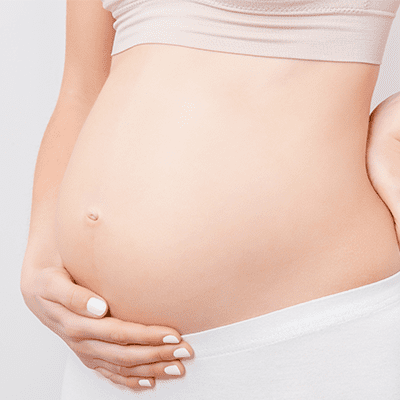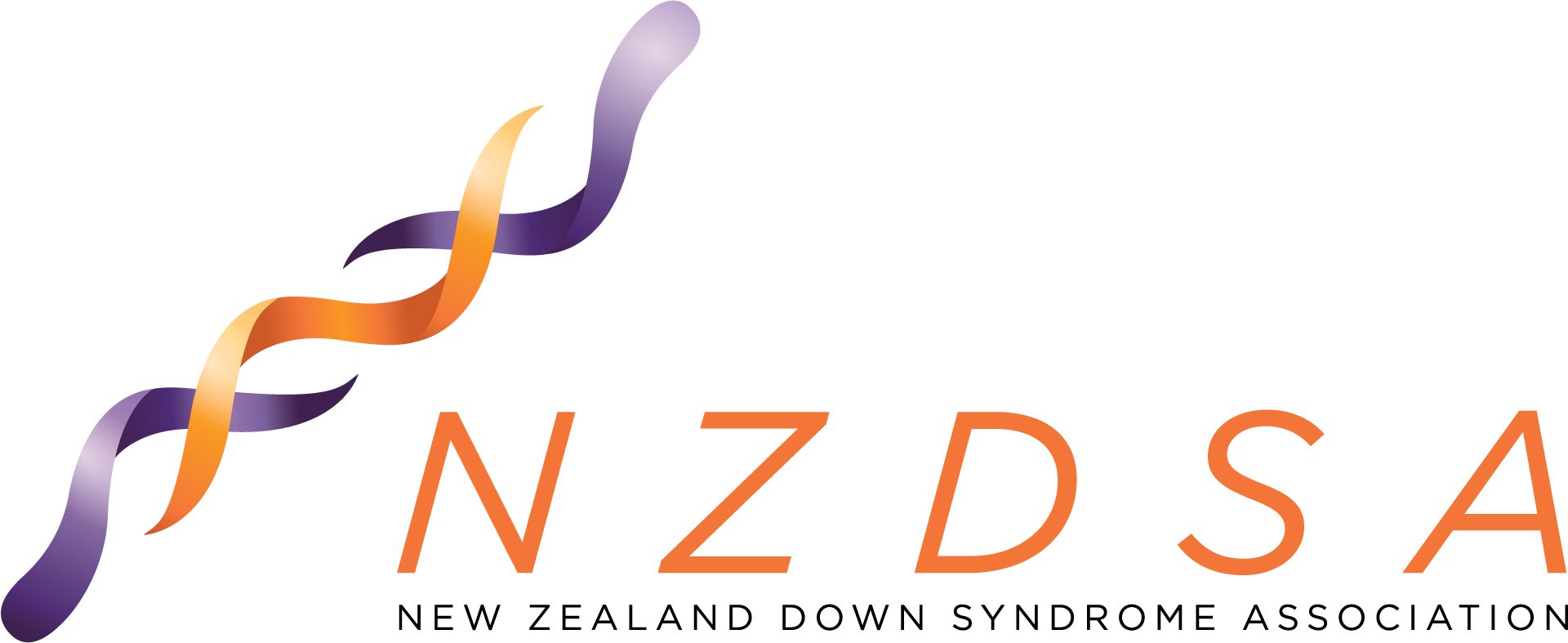Prenatal Tests
Prenatal Screening
Prenatal Tests are screening tests that aim to detect whether a baby might have Down syndrome or some other rare chromosomal condition.
Prenatal screening tests are generally offered to pregnant women toward the end of the first trimester at 10-13 weeks of pregnancy although a screening test is available that can be done as late as 20 weeks of pregnancy.
If a screening test result indicates there is a higher chance the baby could have Down syndrome then a diagnostic test will be offered to the mother.
Prenatal screening tests only test for a very small number of congenital conditions and therefore do not guarantee the baby will not have any disability. There are many more conditions or disabilities that the baby could have, all babies/children are at risk of a disability both pre and post birth.

Are Prenatal Tests Optional?
Prenatal Tests are Optional
- NZ law requires that people are fully informed and give informed consent
- This means that women should have a full understanding of what the tests are for and what the results mean before deciding whether to do the tests or not.
- It is the woman’s choice whether she wants to do screening tests or not
-
-
- Some people think the tests, especially ‘the 12-week scan’ are a routine part of pregnancy, when in fact it is one part of the first trimester screening tests.
- Women should consider whether they want prenatal screening before having this and other tests.
- To be able to choose whether to have the tests women should be given information about the test and information about what choices they will be given if the test gives an increased chance of Down syndrome.
- Women should also be given information about Down syndrome which does not just give medical information but also gives information about the lives of people with Down syndrome.
- It is good to take some time to think about whether to do the tests or not.
-
Why choose to have Prenatal Screening Tests?
- Some families decide they want to know whether or not their baby has Down syndrome.
- Some have the screening tests expecting reassurance that their baby is unlikely to have Down syndrome.
- Some will have the tests because it is offered and think it is routine without considering it much at all.
Why choose not to have Prenatal Screening Tests?
- Some families decide that they will love their baby regardless of whether they have Down syndrome or not, so see no reason to have the tests.
- Some women do not want to be put under pressure to have diagnostic tests if an increased chance of Down syndrome is given because they would not want to risk miscarriage in any circumstance.
- Some families have cultural reasons for deciding not to have prenatal tests.
The woman’s decision should be respected by health professionals and others and she should not be put under any pressure to make one choice or the other. She must do what she feels is right for her.
What are Screening Tests?
Screening Tests calculate a woman’s individual chance or risk of having a baby with Down syndrome or one of the other screened conditions and only say if the chance is high risk or low risk. Screening tests do not give a definite yes or no.
Screening tests are non-invasive meaning they are safe for the baby. If a result is high risk a woman will be offered diagnostic testing.
There are a variety of screening tests. Some are funded by the Government and others may only be available if you pay privately. Your Lead Maternity Carer (LMC), who is usually a Midwife, can advise you about the tests and what regime is funded.
NT Scan: This is an ultrasound scan of the baby that measures the fluid-filled nuchal space at the back of the baby’s neck. This is called the Nuchal Translucency (NT). This scan is offered in the first trimester.
- The NT measurement is ideally taken at 12 weeks of pregnancy, but it may be done between 11 weeks 2 days and 13 weeks 6 days.
- Risk results are no longer provided on NT scans alone as it is less accurate than other screening regimes. The NT scan is now only used in combination with the MSS1 calculation.
First trimester combined screening (also known as MSS1): MSS1 stands for Maternal Serum Screening (a blood test from the mother) which is taken in the first trimester and uses the results of 2 blood markers. These blood results are then combined with the NT scan measurements. This screening is offered if you are less than 14 weeks pregnant.
- The best time for the blood test is between 9–10 weeks pregnant, but it can be done up to 13 weeks and 6 days pregnant.
- The laboratory computer combines the blood test and scan results with other information, such as maternal age and weight, to work out the chance of the baby having Down syndrome or another of the screened conditions.
- This blood test detects 80-85 % of babies with Down syndrome.
- The blood test is free but although the scan is free in some areas it may incur a part-charge in other areas.
Second-trimester maternal serum screening (also known as MSS2): MSS2 is a blood test taken from the mother and uses 4 blood markers, there is no scan. This screening is offered if the mother engages with Prenatal services too late for first trimester screening and is 14–20 weeks pregnant, or when the mother prefers not to have ultrasound scans of her pregnancy.
- The best time for MSS2 is at 14–18 weeks pregnant, but it can be done up until 20 weeks of pregnancy.
- Again the laboratory computer combines the results of the blood test with other information, such as age and weight, to work out the chance of the baby having one of the screened conditions.
- Accuracy levels are said to be about the same as MSS1 combined screening.
- This blood test is free.
Non-Invasive Prenatal Testing (or Screening) – NIPT (or NIPS): This is a newer blood test that is different to MSS1 or MSS2. It uses cell-free fetal DNA found in the mother’s blood to identify chromosomal conditions.
- The NIPT can be done any time from 10 weeks of pregnancy.
- This screening is said to be 99+% accurate for Down syndrome.
- This blood test is expensive and is not currently Government funded (as of 2020).
What does a high or increased risk screening result mean?
- For MSS1 and MSS2 screening, a result of 1 in 300 or higher is given as an increased chance or high risk result.
- For example, a 1 in 200 chance would be given as a high risk result and means that there is one chance in 200 that the baby has Down syndrome. A result of 1 in 400 would mean there is less chance the baby has Down syndrome and would be classed as low risk.
- A high-risk result does not mean the baby has Down syndrome. Only a few (approximately 5%) of mothers with a high or increased chance of screening results will actually be carrying a baby with Down syndrome. That means 95% of mothers identified as high risk will not have a baby with Down syndrome.
- When an increased chance result is given the mother is offered a referral to a specialist and will be offered diagnostic testing. It is the mother’s choice to accept the referral or not.
- Sometimes a high-risk result may be associated with an increased risk of pre-eclampsia, low birth weight, or prematurity, or the baby may have a heart condition.
Does a low risk screening result always mean NO Down syndrome?
- No. Although 80% or more of babies with Down syndrome are identified by MSS1 or MSS2 screening there are always some babies that are not picked up by the screening.
- NIPT is 99% accurate that the baby does or doesn’t have Down syndrome.
- Only diagnostic testing can tell for sure whether the baby has Down syndrome or not.
Diagnostic Tests
- Diagnostic tests are offered to women who receive an increased chance of screening results.
- Diagnostic tests will tell for sure if the baby has Down syndrome or another chromosomal condition.
- Diagnostic tests cannot tell how the baby will be affected by that condition or the range of abilities the child will have.
- It is the mother’s choice whether to accept diagnostic tests.
- Parents should ask as many questions and take as much time as they need before deciding whether to have the diagnostic test.
- Before deciding a mother should have access to more information about the tests and the risks associated with the test. She can be provided with information about the identified condition and advised on how to contact support groups such as the New Zealand Down Syndrome Association. She should also consider her cultural values and what she would do if the diagnostic test identifies the baby does actually have Down syndrome or another condition.
- There are 2 diagnostic tests, both are done under ultrasound guidance and take samples to look at chromosomes from the baby’s cells to find out if the baby has Down syndrome or another condition.
- Chorionic villus sampling (CVS)– done before 14 weeks, and takes a sample of the developing placenta for analysis.
- Amniocentesis – most common test, done after 14-15 weeks of pregnancy. This test draws a sample of the amniotic fluid (or waters around baby) which contains the baby’s cells that can then be used for analysis.
- Both tests carry a risk of miscarriage. CVS carries a slightly higher risk of miscarriage than amniocentesis but on average about 0.5 – 1.0% of mothers who have diagnostic testing will have a miscarriage. For this reason, some mothers may choose not to have diagnostic testing.
Receiving Results
- Results can take up to 2 weeks, the specialist will provide the results of the diagnostic testing. If a result is positive for Down syndrome, support and information are to be given to help the mother make decisions that are right for her.
- The mother should be given as much time as she needs to consider her options and make decisions.
- The mother should not be put under any pressure to make one decision over another.
- The New Zealand Down Syndrome Association welcomes calls from parents who are seeking more information.
